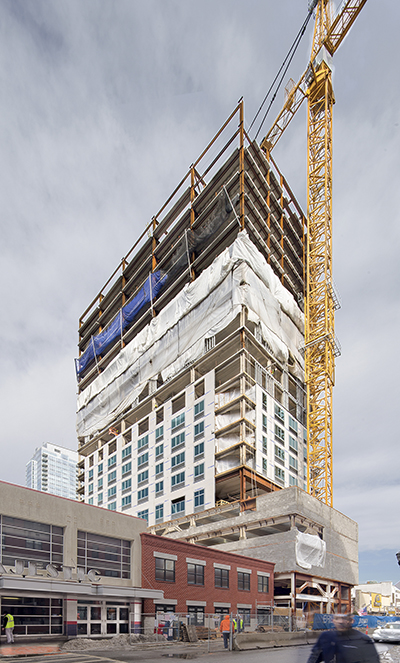 Stamford, Conn., is all business. Well, perhaps not entirely, but the city does boast the largest financial district in the NYC metropolitan area outside of New York itself and is home to multiple Fortune 500 and 1000 companies. And a new residential tower will soon rub shoulders the city’s more business-minded edifices.
Stamford, Conn., is all business. Well, perhaps not entirely, but the city does boast the largest financial district in the NYC metropolitan area outside of New York itself and is home to multiple Fortune 500 and 1000 companies. And a new residential tower will soon rub shoulders the city’s more business-minded edifices.
Located on Summer Street in downtown Stamford, Summer House comprises 16 stories of residences above a six-story parking garage that also houses a gym and retail stores. The L-shaped building is constructed to property lines, but because adjacent properties had retail tenants and are also owned by the same developer, the tower needed to extend 8 ft to 15 ft over these properties and be constructed without any interruption to the existing tenants.
The project was originally intended to be concrete. However, high costs associated with the material, difficult site logistics, a complex program with multiple tenant types and a challenging foundation scenario led the owners to explore other framing alternatives. Structural steel was recommended by contractor Erland Construction, and a mixed-type structure—with steel beams and columns and precast plank floors—was further proposed by the steel fabricator, Ocean Steel (an AISC member and certified fabricator).
Wexler Associates was chosen as the structural engineer, thanks to its experience designing towers on small and tight urban sites with difficult logistics and constructability challenges, with the expectation that its new steel design would deliver a building within the original budget. Wexler redesigned the tower in stages. At each stage, budgets were prepared to verify that expenses did not exceed targets. By the time schematic design drawings were complete, the estimates verified that costs met expectations. The redesign took approximately eight weeks and construction proceeded on time according to the original schedule.
For more about the project, see the article “Rethinking Multifamily Residential” in our December issue (available now!).